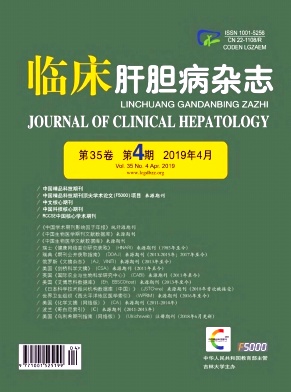|
[1]HANAHAN D, WEINBERG RA. Hallmarks of cancer:The next generation[J]. Cell, 2011, 144 (5) :646-674.
|
|
[2]JIAO L, ZHANG HL, LI DD, et al. Regulation of glycolytic metabolism by autophagy in liver cancer involves selective autophagic degradation of HK2 (hexokinase 2) [J]. Autophagy, 2018, 14 (4) :671-684.
|
|
[3]CHEN Z, ZUO X, ZHANG Y, et al. MiR-3662 suppresses hepatocellular carcinoma growth through inhibition of HIF-1α-mediated Warburg effect[J]. Cell Death Dis, 2018, 9 (5) :549.
|
|
[4]DEPREZ J, VBRTOMMEN D, ALESSIDR, et al. Phosphorylation and activation of heart 6-phosphofructo-2-kinase by protein kinase B and other protein kinases of the insulin signaling cascades[J]. J Biol Chem, 1997, 272 (28) :17269-17275.
|
|
[5]SENGUPTA S, PETERSON TR, SABATINI DM. Regulation of the m TOR complex 1 pathway by nutrients, growth factors, and stress[J]. Mol Cell, 2010, 40 (2) :310-322.
|
|
[6]ZHANG W, PATIL S, CHAUHAN B, et al. FoxO1 regulates multiple metabolic pathways in the liver effects on gluconeogenic, glycolytic, and lipogenic gene expression[J]. J Biol Chem, 2006, 281 (15) :10105-10117.
|
|
[7]GONG ZG, ZHAO W, ZHANG J. Metabolomics and eicosanoid analysis identified serum biomarkers for distinguishing hepatocellular carcinoma from hepatitis B virus-related cirrhosis[J]. Oncotarget, 2017, 8 (38) :63890-63900.
|
|
[8]WANG B, CHEN D, CHEN Y. Metabonomic profiles discriminate hepatocellular carcinoma from liver cirrhosis by ultraperformance liquid chromatography-mass spectrometry[J]. J Proteome Res, 2012, 11 (2) :1217-1227.
|
|
[9]HU H, JUVEKAR A, LYSSIOTIS CA, et al. Phosphoinositide 3-kinase regulates glycolysis through mobilization of aldolase from the actin cytoskeleton[J]. Cell, 2016, 164 (3) :433-446.
|
|
[10]WANG MD, WU H, FU GB, et al. Acetyl-coenzyme A carboxylase alpha promotion of glucose-mediated fatty acid synthesis enhances survival of hepatocellular carcinoma in mice and patients[J]. Hepatology, 2016, 63 (4) :1272-1286.
|
|
[11]GURI Y, COLOMBI M, DAZERT E, et al. m TORC2 promotes tumorigenesis via lipid synthesis[J]. Cancer Cell, 2017, 32 (6) :807-823.
|
|
[12]HUANG D, LI T, WANG L, et al. Hepatocellular carcinoma redirects to ketolysis for progression under nutrition deprivation stress[J]. Cell Res, 2016, 26 (10) :1112-1130.
|
|
[13]YANG Y, LI C, NIE X, et al. Metabonomic studies of human hepatocellular carcinoma using high-resolution magic-angle spinning 1H NMR spectroscopy in conjunction with multivariate data analysis[J]. J Proteome Res, 2007, 6 (7) :2605-2614.
|
|
[14]RESSOM HW, XIAO JF, TULI L, et al. Utilization of metabolomics to identify serum biomarkers for hepatocellular carcinoma in patients with liver cirrhosis[J]. Anal Chim Acta, 2012, 743:90-100.
|
|
[15]PAVLOVA NN, THOMPSON CB. The emerging hallmarks of cancer metabolism[J]. Cell Metab, 2016, 23 (1) :27-47.
|
|
[16]BUNGARD CI, MCGIVAN JD. Glutamine availability up-regulates expression of the amino acid transporter protein ASCT2 in HepG2 cells and stimulates the ASCT2 promoter[J]. Biochem J, 2004, 382 (Pt 1) :27-32.
|
|
[17]SUZUKI S, TANAKA T, POYUROVSKY MV, et al. Phosphateactivated glutaminase (GLS2) , a p53-inducible regulator of glutamine metabolism and reactive oxygen species[J]. Proc Natl Acad Sci U S A, 2010, 107 (16) :7461-7466.
|
|
[18]HU W, ZHANG C, WU R, et al. Glutaminase 2, a novel p53 target gene regulating energy metabolism and antioxidant function[J]. Proc Natl Acad Sci U S A, 2010, 107 (16) :7455-7460.
|
|
[19]LONG J, LANG ZW, WANG HG, et al. Glutamine synthetase as an early marker for hepatocellular carcinoma based on proteomic analysis of resected small hepatocellular carcinomas[J]. Hepatobiliary Pancreat Dis Int, 2010, 9 (3) :296-305.
|
|
[20]XU P, OOSTERVEER MH, STEIN S, et al. LRH-1-dependent programming of mitochondrial glutamine processing drives liver cancer[J]. Genes Dev, 2016, 30 (11) :1255-60.
|
|
[21]DI POTO C, FERRARINI A, ZHAO Y, et al. Metabolomic characterization of hepatocellular carcinoma in patients with liver cirrhosis for biomarker discovery[J]. Cancer Epidemiol Biomarkers Prev, 2017, 26 (5) :675-683.
|
|
[22]JAIN M, NILSSON R, SHARMA S, et al. Metabolite profiling identifies a key role for glycine in rapid cancer cell proliferation[J]. Science, 2012, 336 (6084) :1040-1044.
|
|
[23]ZHANG J, HAO N, LIU W, et al. In-depth proteomic analysis of tissue interstitial fluid for hepatocellular carcinoma serum biomarker discovery[J]. Br J Cancer, 2017, 117 (11) :1676-1684.
|







 DownLoad:
DownLoad: